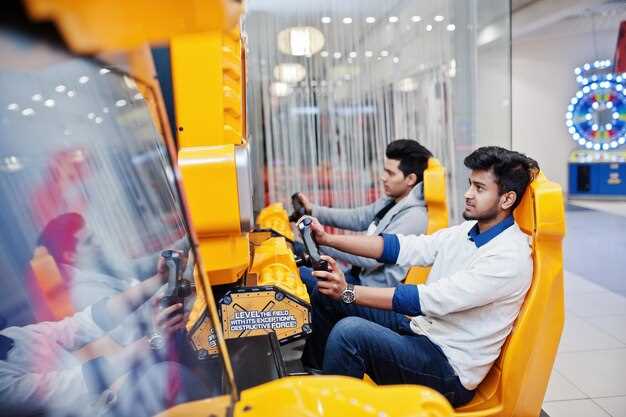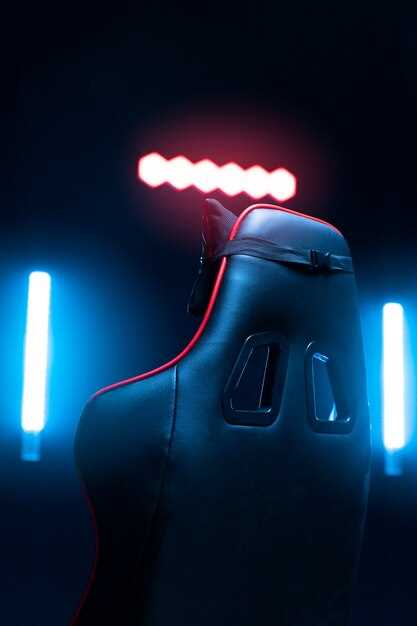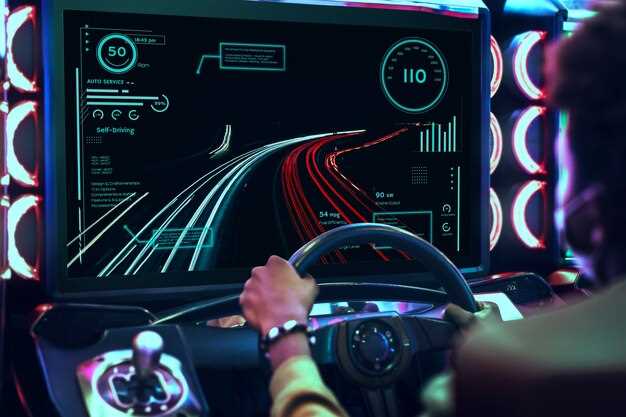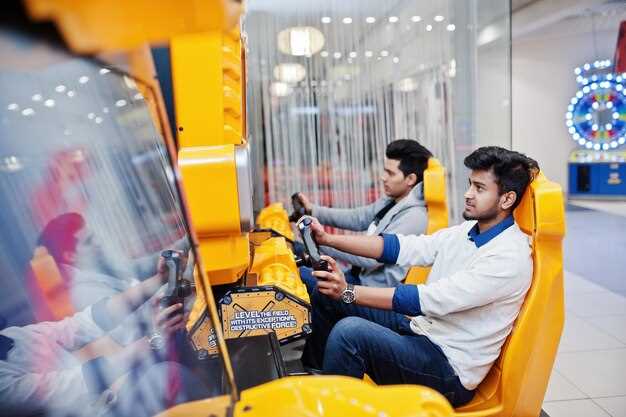If you’re serious about improving your racing skills, investing time in high-quality racing simulators is imperative. Tools like iRacing and Assetto Corsa Competizione provide realistic physics and extensive car setups, making them ideal for honing your craft. These simulators allow you to practice under various conditions, helping you adapt to real-world challenges found in motorsport.
iRacing stands out with its detailed online racing ecosystem, offering competitive leagues and a wide range of tracks. You can practice against real drivers, ensuring that you encounter authentic racing scenarios. Meanwhile, Assetto Corsa Competizione excels in delivering realistic graphics and tire physics, allowing you to feel every nuance of the track.
For those looking to broaden their skill set, rFactor 2 provides a high level of customization in vehicle handling and track behavior. This simulator is particularly favored by those wanting to experiment with different setups. Additionally, platforms like Project CARS 2 deliver a robust training environment with diverse weather conditions, enabling you to experience how varying climates impact vehicle performance.
Every racer has unique needs, but these simulators serve as a strong foundation for enhancing your abilities. Incorporating them into your training regimen will lead to measurable improvements and prepare you better for the demands of real racing.
Top Features to Look for in Racing Simulators

Look for high-quality graphics and realism in rendering environments and vehicles. Advanced graphics engines create lifelike tracks and surroundings that enhance immersion during training sessions.
Physics and Handling
Prioritize simulators that provide realistic physics and handling characteristics. An accurate simulation of vehicle dynamics, tire behavior, and weight transfer allows for a more authentic experience. This helps racers develop their skills in vehicle control and responsiveness on various surfaces.
Realistic Track Data
Choose simulators that include real-world tracks and accurate data for each. Being able to train on actual racetracks improves familiarity with the circuits you’ll encounter in professional racing. Look for features like lap times, cornering profiles, and track conditions, which offer insights for performance improvement.
Lastly, ensure the simulator supports customizable setups and telemetry data analysis. These tools enable fine-tuning of vehicle performance to match individual driving styles, maximizing training efficiency.
Comparison of Leading Racing Simulators Available Today

The most recommended racing simulators for motorsport training include iRacing, Assetto Corsa Competizione, and rFactor 2. Each platform offers unique features tailored to different training needs.
iRacing
iRacing stands out with its subscription model, providing a vast array of tracks and cars. The online multiplayer component fosters competitive environments, perfect for honing racecraft. Realistic physics and tire modeling enhance the driving experience, making it an excellent tool for understanding vehicle dynamics. Regular updates and a focus on eSports keep the community active and engaged.
Assetto Corsa Competizione
Assetto Corsa Competizione excels in graphical fidelity and accurate physics. It simulates GT racing with precision, making it a top choice for aspiring GT drivers. The detailed weather conditions and day-night cycles offer immersive training scenarios. The user-friendly interface allows easy adjustments to setups, catering to individual preferences.
For advanced users, rFactor 2 provides extensive customization options. It offers a strong modding community, enabling users to create or tweak cars and tracks. The realism in tire and suspension physics supports deep learning for professional racers. However, the learning curve may be steeper compared to others, appealing to those seeking to fine-tune every aspect of their performance.
Evaluating your specific training goals will help determine the most suitable option. iRacing is recommended for competitive racing, Assetto Corsa Competizione for GT simulation, and rFactor 2 for detailed customization. Explore each simulator to find the best fit for your motorsport training needs.
How to Choose the Right Racing Simulator for Your Needs

Identify your goals first. If you aim to improve technical skills, look for simulators that offer realistic physics and tire models, like iRacing or Assetto Corsa. For general racing experience, consider titles like Gran Turismo or Forza Motorsport with an accessible interface.
Assess your hardware setup. Some simulators demand powerful PCs for optimal performance and graphics. Ensure your setup meets the recommended specifications to avoid lag. Check for compatibility with your steering wheel and pedals; some simulators have specific requirements.
Evaluate the available tracks and vehicles. A simulator with a wide variety of cars and circuits provides better training opportunities. Investigate user reviews and forums to see which platforms offer the most diverse options.
Balance realism with fun. While authenticity is crucial for training, you should enjoy the simulator. Check if the game has a variety of modes, including arcade or casual racing, to keep you engaged during practice sessions.
Explore community support. Active online communities can enhance your experience through shared tips and setups. Look for forums or Discord channels associated with the simulator you’re considering to gauge the level of support available.
Finally, take advantage of trial periods or demo versions. Testing different simulators allows you to find one that feels right before making a financial commitment. This hands-on approach helps you gauge usability and enjoyment firsthand.
Benefits of Using Driving Simulators for Professional Drivers
Driving simulators significantly enhance the skills of professional drivers by providing a safe environment to practice. They allow for repeated runs on various track layouts without the risks associated with real driving. This controlled setting helps drivers refine techniques and make adjustments more efficiently.
Real-Time Feedback and Analysis
Simulators offer immediate feedback, enabling drivers to analyze their performance instantly. They track key metrics such as lap times, braking efficiency, and throttle control. This data-driven approach assists drivers in identifying specific areas for improvement, leading to a more focused training regimen.
Adaptation to Different Conditions
Simulators allow drivers to experience a wide range of driving conditions, from different weather scenarios to various track surfaces. This exposure enhances adaptability and prepares them for unpredictable situations on the race day. Furthermore, practicing in a simulator prior to an event can build confidence when faced with similar real-world conditions.
Beginner’s Guide to Getting Started with Racing Simulators
Choose a racing simulator that matches your goals. For beginners, titles like Assetto Corsa, iRacing, and Project CARS 2 provide excellent gameplay alongside realistic physics. Each offers unique features to enhance your learning experience.
Selecting Equipment
Invest in a quality steering wheel and pedals. Options like the Logitech G923 or Thrustmaster T300 deliver good feedback and responsiveness. A dedicated racing seat can improve comfort and stability, although it isn’t mandatory at the start. Consider adding a headset for better communication and immersion.
Learning Techniques
Focus on mastering car control. Start with lower-powered vehicles to practice throttle and brake management. Utilize practice modes to familiarize yourself with tracks. Analyze telemetry data if available to understand performance metrics and identify areas for improvement.
Compete against AI opponents first to build confidence. Gradually transition to multiplayer settings. Participate in leagues or casual races to experience real-time competition while learning from others. Keep track of your progress and set measurable goals to maintain motivation.
Engage with the racing community through forums and social media. Sharing experiences and tips can significantly boost your learning curve and provide valuable insights. Keep experimenting and refining your racing techniques to enhance your skills.
Setting Up Your Racing Simulator: Hardware and Software Essentials
Choose a wheel and pedals that offer realistic feedback. The Logitech G923 and Thrustmaster T300 RS are reliable options, providing strong force feedback to enhance your experience. Pair these with a sturdy racing seat to ensure comfort during long sessions.
Consider investing in a dedicated gaming PC or a high-end gaming console. A PC with at least an NVIDIA GeForce GTX 1660 or AMD RX 580 will handle most racing simulators smoothly. Ensure you have at least 16GB of RAM to support multitasking, especially when using additional software for telemetry or streaming.
For the display, opt for a triple-monitor setup or a high-resolution single monitor for a wider field of view. Curved screens can also enhance immersion. A refresh rate of 144Hz provides a smoother visual experience.
Sound matters too. High-quality headphones or a surround sound system will give you a better sense of spatial awareness on the track. Look for systems with clear bass and crisp highs to catch every engine rev and tire squeal.
- Hardware Setup:
- Wheel and Pedals: Logitech G923, Thrustmaster T300 RS
- Racing Seat: Choose a model with good support
- Gaming PC Specs: NVIDIA GTX 1660, 16GB RAM
- Display: Triple monitor setup or high-resolution single monitor
- Audio: High-quality headphones or surround sound system
On the software side, Steam and platforms like iRacing or Assetto Corsa deliver robust racing experiences. Ensure your simulator is compatible with your hardware. For improved realism, add software like SimHub for race data analytics and race engineer simulations.
Maintain your hardware and software for optimal performance. Regularly update drivers and software to avoid lags and crashes. Calibrate your wheel and pedal settings to match your preferences before each session.
- Software Setup:
- Simulators: iRacing, Assetto Corsa
- Data Analytics: SimHub
- Keep software and drivers up-to-date
- Calibrate equipment before each use
Customize settings to suit your driving style. Adjust force feedback settings, steering sensitivity, and button configurations for a personalized experience. Use practice modes within simulators to hone your skills and get comfortable with track layouts.
Engage with the online racing community. Join forums or social media groups to exchange tips and experiences. Participating in online leagues can provide competitive practice that translates to real-world improvements.
Techniques for Improving Driving Skills Using Simulators
Focus on specific skills during practice sessions. For instance, dedicating time to cornering techniques allows for better handling and speed through turns. Use the simulator’s replay feature to analyze your racing lines and identify areas for improvement.
Adjust your settings for realism. Configuring your simulator to mimic real-world sensations–like tire friction and vehicle dynamics–creates a more immersive experience. This improves muscle memory and response times, translating skills to actual racing.
Incorporate varied weather conditions in your training. Rain, fog, and other scenarios challenge your adaptability. Practicing under different circumstances enhances decision-making and builds confidence in handling diverse track conditions.
Utilize telemetry data. Most racing simulators offer detailed feedback on your driving performance. Analyze metrics such as throttle response, braking points, and steering inputs to refine your technique and optimize lap times.
Engage in competitive practice. Join online leagues or time trials to foster a competitive environment. Racing against others challenges your skills and provides motivation to improve. Observing opponents can reveal new strategies and techniques.
Regularly review and establish goals. Set clear, measurable targets for each practice session, like improving lap times or mastering a specific section of the track. Tracking progress reinforces your focus and commitment.
Experiment with different cars and setups. Each vehicle behaves differently; understanding various dynamics helps in adapting your driving style. Test various setups to see their effects on performance and handling, increasing overall competency.
Incorporate mental training. Visualization techniques help improve concentration and race strategy. Spend time imagining race conditions, which can enhance focus and readiness during actual races.
Virtual Reality and Its Impact on Racing Simulation Experience
Using virtual reality (VR) in racing simulations enhances immersion, providing a more authentic experience for drivers. With realistic visuals and spatial awareness, VR technology brings an unparalleled depth to virtual tracks. Players can accurately gauge distances, speeds, and positions of opponents, mimicking real-life racing dynamics.
Enhanced Immersion and Realism
The combination of VR headsets and motion platforms creates a sense of presence. Drivers feel the weight shift during turns and experience g-forces, which translates to improved reactions during training. Racing simulations like iRacing and Assetto Corsa support VR, allowing racers to practice in environments that replicate real tracks with stunning detail.
Data-Driven Insights for Improvement
Many VR racing platforms collect data on performance, providing key metrics that help drivers refine their skills. This data analysis covers lap times, braking points, and throttle application. Incorporating these insights accelerates the learning curve for drivers, enabling structured practice routines. The integration of VR with telemetry tools gives racers a comprehensive overview of their performance.
| Feature | Benefit |
|---|---|
| Immersive Visuals | Heightened realism and engagement |
| Spatial Awareness | Accurate distance estimation and positioning |
| Performance Data | Insightful metrics for skill improvement |
| Motion Feedback | Realistic feel of car dynamics |
Integrating VR into racing simulations not only boosts enjoyment but also sharpens skills essential for competitive success. By harnessing the full capabilities of this technology, drivers can take their training to the next level.
Community and Online Resources for Racing Simulator Enthusiasts
Join forums like RaceDepartment and iRacing Forums to connect with other players and share tips. These platforms feature discussions on setups, driving techniques, and hardware choices that can enhance your sim racing experience.
Participate in discords such as the Sim Racing Community Discord. This space is ideal for real-time communication and finding racing partners. You can join voice channels for group races or gather insights from experienced racers.
Explore YouTube channels like Sim Racing Paddock and Jimmy Broadbent. They offer tutorials, reviews, and live streams that make learning and improving skills easier. Follow their advice on car setups and race strategies to elevate your play.
Visit websites like Motorsport.com and RacingSimTools for expert articles and the latest news in the sim racing scene. Stay updated on upcoming competitions and software updates that might impact your setup.
Utilize resources like Assetto Corsa Competizione’s official forums to access modding content and community-created tracks. Custom mods can bring fresh challenges and deepen your engagement with the simulator.
Take part in virtual racing leagues such as VRS and Sim Racing League. Engaging in competitions not only hones your skills but also provides an opportunity to interact and compete with a broader community.
For equipment tips, check out websites like Sim Racing Garage. They provide in-depth reviews and comparisons, helping you make informed choices about peripherals like wheels and pedals.
Engage with your local racing clubs or communities. Look for in-person events, meetups, or sim racing competitions to network and learn from seasoned racers.
Success Stories: Pro Drivers Who Use Simulators for Training
Several professional racers have integrated simulators into their training regimens, leading to impressive results on the track. Their stories highlight the benefits of this technology in honing skills and preparing for races.
Max Verstappen
Formula 1 star Max Verstappen often utilizes sim racing to refine his driving techniques. He collaborates with Red Bull Racing’s sim department to analyze track layouts and test setups. This approach provides valuable insights before real-world practice sessions. Verstappen credits simulator training for enhancing his understanding of car dynamics and tire behavior.
Scott McLaughlin
NASCAR and IndyCar driver Scott McLaughlin regularly participates in simulator sessions, particularly during the off-season. He acknowledges that simulator practice allows him to familiarize himself with various tracks quickly. McLaughlin believes that consistent sim use has directly contributed to his success in mastering layouts and optimizing racing strategies.
- Personalized Training: Simulators enable tailored training regimes focused on individual strengths and weaknesses.
- Cost-Effectiveness: Simulations reduce the need for costly on-track testing.
- Risk Reduction: Drivers can experiment with aggressive maneuvers without the fear of accidents or vehicle damage.
These experiences showcase how top racers leverage simulators to sharpen their skills, gain valuable experience, and ultimately perform better in high-pressure competitions. The blend of simulation technology and real-world application has proven to be a winning strategy on the track.
Video:
50 Sim Racing Mistakes from Beginners to PRO Level
50 Sim Racing Mistakes from Beginners to PRO Level by Suellio Almeida 168,821 views 1 year ago 11 minutes, 29 seconds
Q&A:
What are the key features to look for in racing simulators designed for motorsport training?
When evaluating racing simulators for motorsport training, several key features should be considered. Firstly, accuracy in physics simulation is critical to replicate real-world driving dynamics. Next, a wide variety of tracks and vehicles is important, allowing users to practice in different conditions. Additionally, force feedback through steering wheels enhances realism by providing tactile responses from the car. Customization options for vehicle setups and driving aids can also support tailored training experiences. Lastly, community features such as online multiplayer or leaderboards can motivate users by allowing competition with other racers.
How do racing simulators compare to real-life driving experiences for training purposes?
Racing simulators are designed to replicate real-life driving conditions and can serve as a valuable training tool. While they cannot fully replicate the physical sensations of driving, advanced simulators provide highly realistic graphics, physics, and vehicle handling. They allow drivers to practice techniques, develop their skills, and learn track layouts without the risks associated with actual racing. However, it’s important to complement simulator training with real-world practice, as nothing can fully replace the experience of driving a real car on track.
Are there specific racing simulators recommended for beginners looking to get into motorsport training?
For beginners, several racing simulators are particularly user-friendly and great for entering the world of motorsport training. Titles like “iRacing” provide structured learning with many resources and community support. “Assetto Corsa” offers a user-friendly interface and a variety of mods that can enhance learning. “Gran Turismo” on PlayStation is accessible and features realistic driving mechanics. Each of these simulators has tools and tutorials that help newcomers understand basic concepts and improve their racing skills progressively.
What platforms are the best for running racing simulators? Can you recommend any specific hardware?
The choice of platform for racing simulators can vary based on personal preference and budget. PC typically offers the most customizable experience with the latest graphics and a wide range of compatible hardware. Consoles like Xbox and PlayStation are also great, providing a good balance between convenience and performance. For hardware, investing in a quality racing wheel, such as Logitech G923 or Thrustmaster T300, greatly enhances the experience. A good gaming chair with a racing simulator setup can improve comfort and immersion. Additionally, a PC or console with strong processing capabilities ensures smooth gameplay.
How can racing simulators help professional drivers in their training and preparation?
Professional drivers can benefit from racing simulators in multiple ways. They allow for extensive practice without the logistical challenges of track time and can be used to analyze racing lines, braking points, and tire management under various conditions. Such simulators can replicate specific tracks and scenarios, enabling drivers to familiarize themselves with new courses before actual races. Furthermore, they can be a platform for testing different car setups and strategies, providing data that can be crucial in real-world racing situations. Overall, simulators are a practical and effective tool for skill enhancement and preparation.
What are the top racing simulators recommended for motorsport training?
Some of the most highly recommended racing simulators for motorsport training include iRacing, Assetto Corsa Competizione, and rFactor 2. iRacing is known for its realistic online racing and extensive community features, making it popular among serious racers. Assetto Corsa Competizione focuses on GT racing and offers an authentic driving experience with precise physics simulations. rFactor 2 is favored for its modding capabilities and dynamic weather conditions, providing a varied training environment. Each of these simulators offers different strengths, catering to various aspects of motorsport training.


